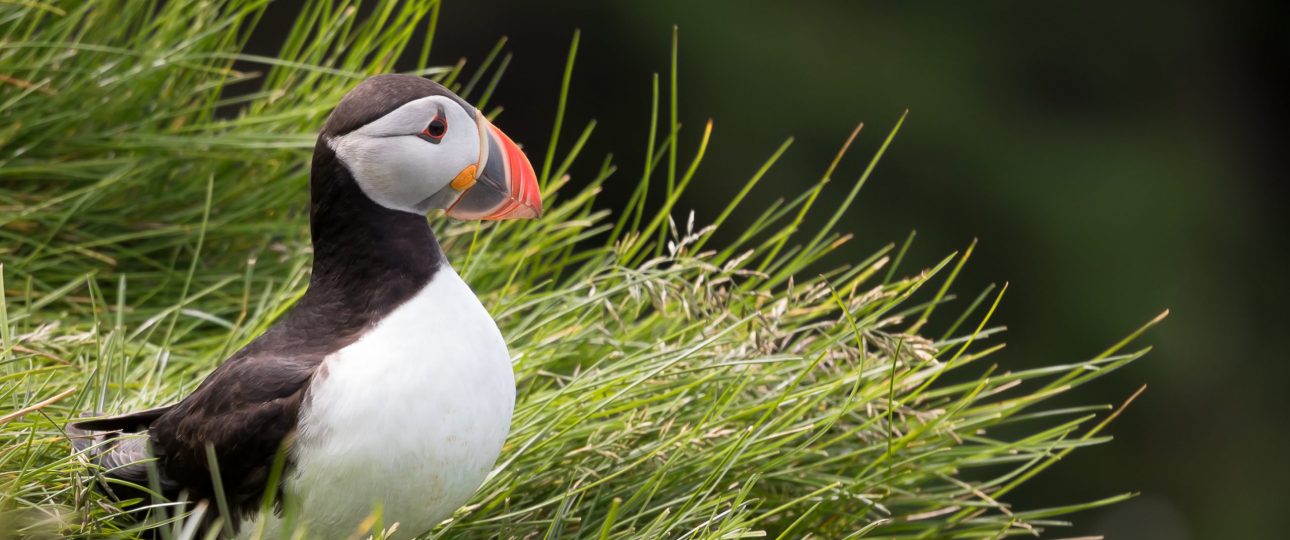Puffins in Iceland: Colorful Seabirds of the Coast
Habitat and Nesting
Iceland is a prime location for observing puffins, particularly the Atlantic puffin (Fratercula arctica). These birds prefer nesting in colonies on rocky cliffs and steep coastal slopes, which offer protection from predators and easy access to the ocean for feeding. Notable nesting sites include the Westman Islands, Dyrhólaey, and Látrabjarg cliffs. These areas are celebrated for their large puffin populations and breathtaking landscapes, making them ideal for birdwatching.
Physical Characteristics
Puffins are easily recognizable by their striking appearance. They have black upper parts and white underparts, with a distinctive black cap and mainly white face. Their colorful beaks, which become especially vibrant during the breeding season, feature shades of orange, yellow, and blue. This coloration is not just for show; it plays a crucial role in social interactions and mating rituals. After the breeding season, the colorful outer part of the beak is shed, revealing a smaller, duller bill beneath.
Breeding Season and Behavior
The breeding season for puffins in Iceland typically peaks from late spring to early summer. During this time, puffins return to their nesting sites, providing a unique opportunity to observe their courtship behaviors. Puffins are monogamous and often reunite with the same mate and burrow each year. They lay a single egg, with both parents sharing the duties of incubation and feeding the chick.
Diet and Feeding Habits
Puffins are skilled hunters, primarily feeding on small fish. They catch their prey by diving into the ocean and using their wings to swim underwater. A remarkable aspect of their feeding behavior is their ability to hold multiple fish in their beaks at once, which they transport back to their chicks.
Conservation and Ecological Importance
While puffins are not currently endangered, they face challenges such as climate change and overfishing, which threaten their food supply. Conservation efforts are vital to ensure the sustainability of puffin populations. In Iceland, measures are in place to protect their habitats and minimize human disturbances, especially during the sensitive breeding season.
Cultural Significance
Puffins hold a special place in Icelandic culture, often appearing in folklore and as motifs in local art and crafts. Their presence is cherished by both locals and visitors, symbolizing the rich biodiversity of Iceland.




